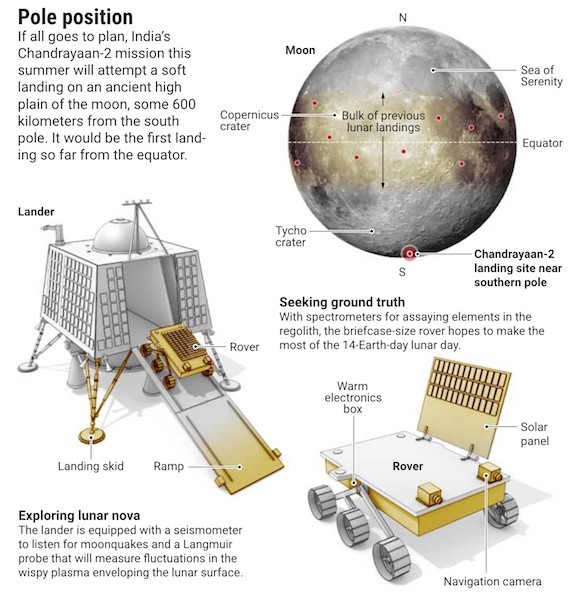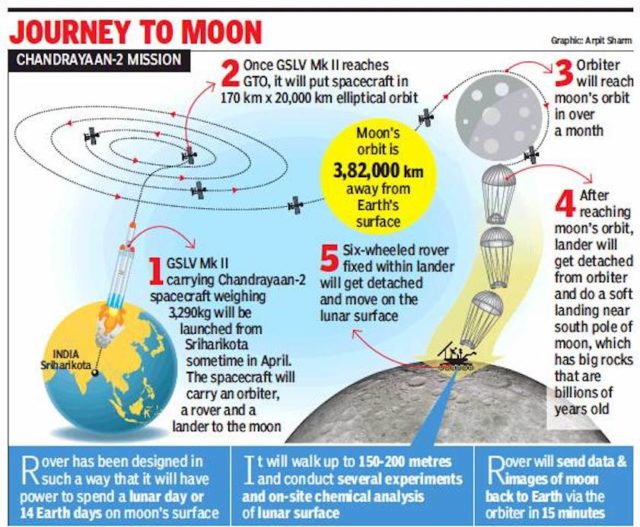PREVIOUS
‘Chandrayaan-2’
March 26 , 2018
2842 days
5235
0
- The launch of India’s second lunar mission ‘Chandrayaan-2’ has been postponed to October, 2018 as the experts have suggested some tests.
About Chandrayaan-2
- The 800-crore INR Chandrayaan-2 mission is a totally indigenous mission
- With Chandrayaan-2 ISRO is experimenting with an orbiter, a rover and a lander for the first time.

- Once the GSLV-F10 put the spacecraft in the 170 km x 20,000 km elliptical orbit, the orbiter would be manoeuvred towards the 100-km lunar orbit by firing thrusters and then the lander housing the rover will separate from the orbiter.
- After a controlled descent, the lander will soft-land near the south pole of the lunar surface and deploy the rover.
- Soft-landing on the lunar surface is the most challenging part of the mission.
- Till now, only the US, Russia and China have been able to soft-land spacecraft on the lunar surface.
- During the 14 Earth days, the six-wheeled rover will have the power to move around 100-200 metre.
- The instruments, including a high-intensity camera, on the rover will observe the lunar surface and take images of the moon.

- It will send back data to the Earth via the orbiter within 15 minutes that will be useful for analysis of the lunar soil.
- Payloads of the 3,290kg Chandrayaan-2 spacecraft will collect scientific information on lunar topography, mineralogy, elemental abundance, lunar exosphere and signatures of hydroxyl and water-ice.
Leave a Reply
Your Comment is awaiting moderation.


